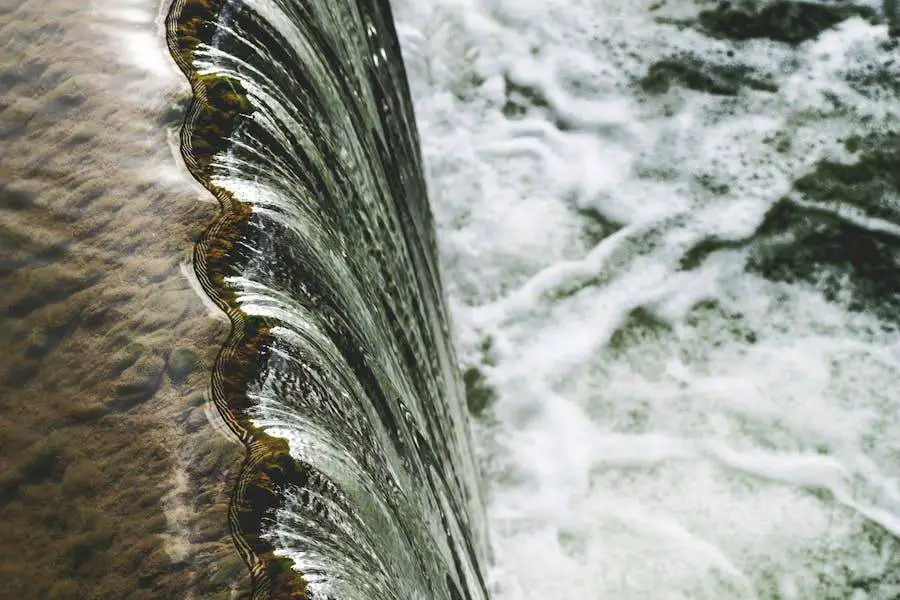Table of Contents
Building a small dam wall is a complex, yet profoundly impactful project that can serve a multitude of purposes—from irrigation and water storage to flood control and ecosystem creation.

It involves more than just piling materials; it requires careful planning, design, consideration of environmental impacts, and an understanding of hydrological dynamics.
Additionally, the costs associated with such a venture are a critical aspect for potential builders.
This guide aims to provide a comprehensive overview of the process, material considerations, and financial implications involved in building a small dam.
Site Selection and Preparation
The first step in building a small dam is to assess the suitability of the location.
This involves a detailed analysis of the geological structure, to ensure the ground can support the dam, and hydrological studies, to understand the water flow and volume.
Environmental impact assessments must also be conducted to determine any potential harm to local ecosystems or downstream water users.
Once a site has been deemed suitable, preparation begins with clearing vegetation, debris, and topsoil to expose a stable subsoil layer.
This process may require heavy machinery and must take into account erosion control measures to prevent sediment from washing into nearby streams or water bodies.
Design Considerations and Material Selection
Design Parameters
Designing a small dam requires considering numerous parameters including the intended purpose of the dam (e.g., water storage, flood control), expected maximum water volume, flow rate, and necessary safety features.
Engineers must also decide on the height, width, and length of the dam, as well as the design of spillways which are crucial for safely passing excess water.
Choosing the Right Materials
Materials for small dam construction vary by type and availability. Earth, rocks, and concrete are common choices, each with its benefits and limitations.
Earth is inexpensive and readily available but less durable. Rocks offer stability and are good for riprap.
Concrete, while costly, provides strength and longevity, especially for critical structures like spillways.
Building the Foundation
A strong and stable foundation is paramount in dam construction, ensuring the structure can withstand the forces exerted by stored water and resist seepage that could undermine the dam.
The following steps outline a methodical approach to building a solid foundation for a small dam.
Step 1: Conduct a Geotechnical Survey
Before any construction begins, conduct a geotechnical survey of the intended site. This involves analyzing soil, rock, and groundwater conditions to determine the suitability of the foundation site.
Understanding the geological makeup of the site ensures that the chosen foundation design will provide adequate support for the dam.
Step 2: Design the Foundation

Based on the findings of the geotechnical survey, design the foundation to suit the specific conditions of the site.
This may involve deciding between different types of foundations (e.g., gravity, arch, or buttress) and determining the necessary depth and width of the foundation to ensure stability.
The design should also include considerations for drainage and seepage control.
Step 3: Excavation and Preparation
Excavate the site to the designed depth, removing any vegetation, topsoil, and unsuitable material until reaching a stable subsoil or bedrock layer that can serve as a base for the foundation.
Ensure the excavation area is level and compact any loose soil to prevent settling. If encountering water during excavation, use pumps to keep the area dry.
Step 4: Construct a Cut-off Trench
A cut-off trench is a crucial component for preventing water from seeping underneath the dam.
Dig a trench along the upstream line of the foundation deep enough to reach an impermeable layer, such as clay or bedrock.
Fill this trench with a mixture of clay and other impermeable materials, compacting it firmly to create a watertight barrier.
Step 5: Install Drainage Systems
Proper drainage systems are essential to manage water within and around the dam foundation, preventing pressure buildup that could cause structural issues.
Install drainage pipes or channels at strategic points within the foundation to direct water away from the dam.
Cover these with gravel or permeable fabric to prevent clogging and ensure efficient water flow.
Step 6: Finalize the Foundation Construction
Once the cut-off trench is filled and the drainage systems are in place, proceed to finalize the foundation construction.
This may involve laying a concrete base or constructing the first layer of the dam using selected materials (e.g., earth, rock fill).
Compact each layer thoroughly to enhance stability before continuing with the construction of the dam body above the foundation.
Careful adherence to these steps when building the foundation will set the stage for a durable and effective dam structure.
A well-constructed foundation not only supports the weight and force of the dam but also significantly reduces the risk of seepage and structural failure, ensuring the longevity of the dam.
Constructing the Core Structure
Layer-by-Layer Method
The core structure is built up gradually, adding materials in layers and compacting each layer thoroughly before adding the next.
This method ensures each layer is stable and reduces the risk of settling or shifting that could compromise the dam’s integrity.
Ensuring Structural Integrity
Incorporating structural elements like spillways and overflow channels is essential to manage water flow and protect the dam from erosion or overtopping during heavy rains.
These features must be integrated into the design from the start and constructed with precision to function correctly.
Water Diversion and Management
Diverting Water During Construction
To keep the construction site dry, temporary diversion channels or cofferdams may be used to reroute water around the dam site.
This allows work to proceed in dry conditions and is crucial for foundation work.
Long-Term Water Flow Control

Long-term management of water through and over the dam is handled via permanent spillways, fish ladders for ecological considerations, and sediment traps to prevent the accumulation of debris that could impact dam functionality.
Finishing Touches and Landscaping
Surface Protection
Applying protective measures such as rock riprap on the dam slopes or planting vegetation can prevent erosion by wind and water.
These steps not only protect the dam but can also enhance its integration into the surrounding landscape.
Aesthetic and Environmental Enhancements
Landscaping around the dam can improve its aesthetic appeal and provide a habitat for wildlife.
Creating wetlands or planting native species around the water’s edge are ways to enhance the environmental value of the dam project.
How Much Does It Cost to Build a Small Dam
The financial commitment for constructing a small dam can significantly vary, but as a general estimate, total costs might range from $1 million to $3.5 million or more.
Initial planning and design phases could cost between $50,000 to over $100,000.
Material expenses, based on the choice between earth, rock, or concrete, typically range from $500,000 to upwards of $1.5 million.
Labor costs add an additional $300,000 to $600,000, depending on project specifics and location.
Regulatory compliance and environmental mitigation efforts may further increase the budget by $50,000 to $500,000.
Post-construction, yearly maintenance, and insurance are also necessary financial considerations, potentially amounting to thousands of dollars annually.
Given this wide range of potential expenses, it’s crucial for anyone considering building a small dam to seek detailed, professional cost estimates tailored to their specific project to ensure accurate budgeting and financial planning.
Conclusion
Constructing a small dam is a significant but rewarding undertaking that offers numerous benefits for water management, conservation, and land use.
By carefully following each step of the process, from site selection and design to construction and maintenance, builders can create a safe, effective, and environmentally responsible dam.
Understanding the costs involved and planning accordingly will further ensure the success and sustainability of the project.








